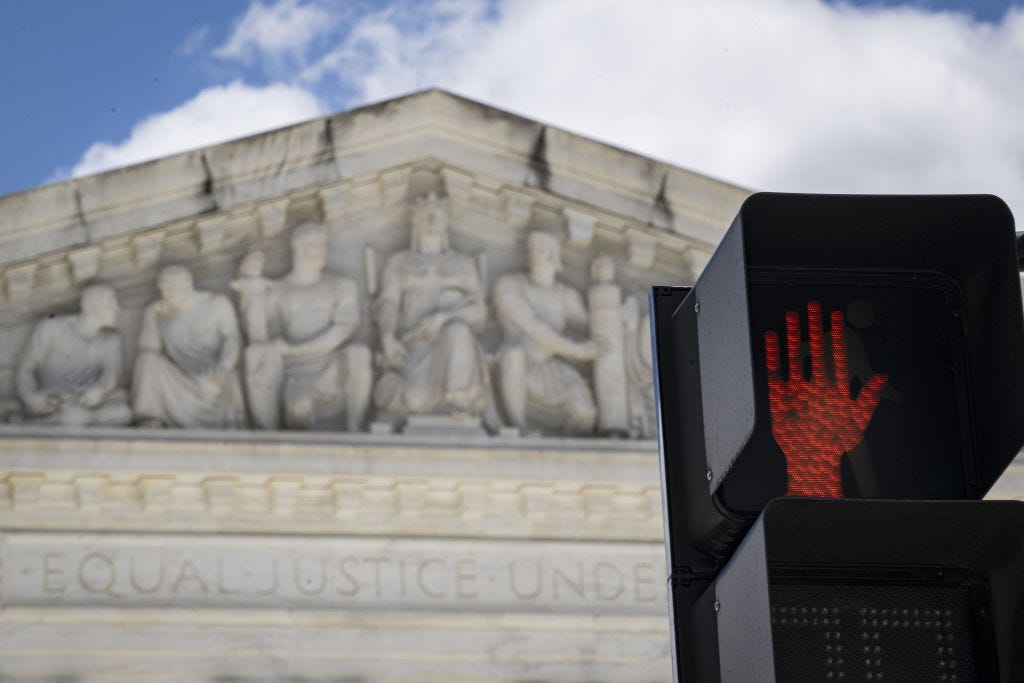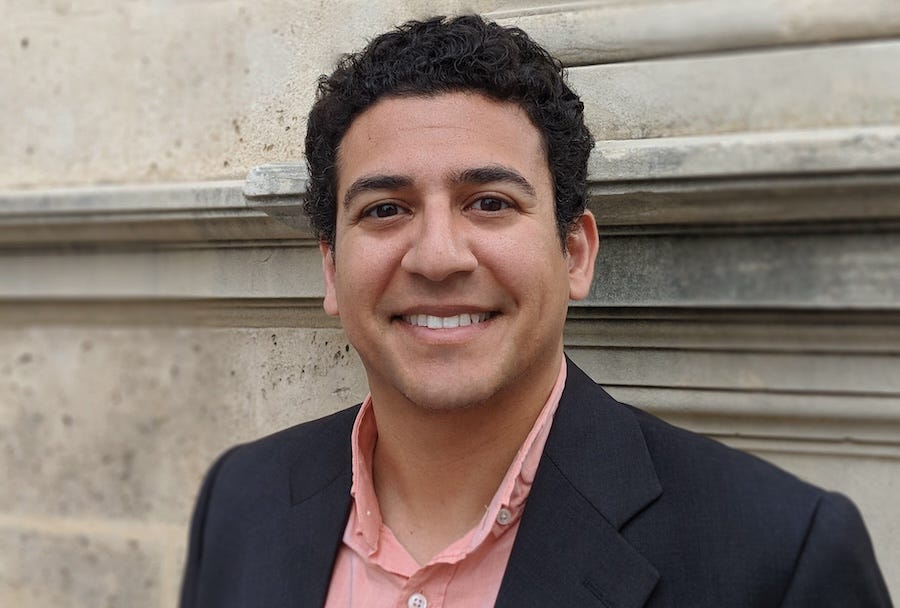How the imperial presidency was built
Constitutional scholar Aziz Rana on the Trump immunity case, how the conservative court limits political debate, and why we need to get real about the Constitution's limitations
Why do pundits argue the relative merits of 6-week versus 15-week abortion bans? And what does that have to do with the Supreme Court’s shocking, expansive grant of presidential immunity in the Trump v. United States decision yesterday?
According to constitutional scholar Aziz Rana, both are rooted in a bipartisan legacy of excessive reverence for the Constitution that evolved as the U.S. became a global power and the way the conservative movement has relied on that reverence to justify its use of the most anti-democratic tools in the founding document. That approach has enabled it to shift power to the courts and the executive, make its minority positions the law of the land, and narrow the range of political discussion to close off the possibility of effective opposition.
Rana is a professor of law and government at Boston College Law School and the author of a new and very timely book, The Constitutional Bind: How Americans Came to Idolize a Document That Fails Them, which explores how Americans gave up arguing over the Constitution and began treating it as a sacred text, how that’s enabled excesses of executive power and made the most undemocratic features of the structure of American government the most important, and why this misplaced faith continues to block possibilities for positive change while enabling the attacks on basic freedoms that we’ve seen from the current Supreme Court’s Republican supermajority.
We talked to Rana about the decision in favor of expansive presidential immunity in Trump v. United States, how it fits into a long — and bipartisan — history of efforts to expand presidential power, how the Court and media coverage of it has fooled us into accepting hair-splitting squabbles on the far right as the parameters of legitimate political conversation, and how we can begin fixing the problem.
It’s a fascinating conversation on an essential topic — the survival of American democracy — and you won’t want to miss it.
A request for those who haven’t yet joined us: The interviews and essays that we share here take research and editing and much more. We work hard, and we are eager to bring on more writers, more voices. But we need your help to keep this going. Join us today to support the kind of independent media you want to exist.
And today and through the holiday weekend we’re offering new paid subscribers a special discount of 20 percent. You will lock in this lower price forever if you join us now!
Is the decision in Trump v. United States a radical break with the past, or is it a continuation of this expansion of the power of the Court that’s been going on for a while now?
So first, thing, this ruling is a brazen and dangerous expansion of presidential power in ways that entrench a deep climate of impunity.
This case feels like an extension of a long story of our collective institutions backstopping state impunity. There are very few examples of our collective institutions holding political elites accountable for acts of violence. But at the same time, I think we're in this moment because of a specific breakdown of a kind of agreement that defined politics in the mid-20th century. So it's both a continuity and a type of rupture that tells us we're in a different place and time than we were in the 1970s or even in the 1990s.
There’s been a lot of discussion about how the majority has invented a new concept of immunity out of thin air, at odds with the supposed originalism of the conservative justices. But something that really struck me was how these powerful dissents, especially Justice Sotomayor’s, actually are very originalist — they really lean into what the Framers meant. Is that an answer to the majority’s rather creative take on the Constitution?
They’re very reverential. The first thing about the originalism of the dissents is that I'm not, in theory, opposed to using an originalist methodology. I think it's really important to recognize that, These are judicial arguments in the context of making claims within a court case and being able to highlight how the preferred method of many of the conservative justices on the Court leads to very, very different outcomes than where the conservatives are going is a powerful rhetorical and argumentative approach.
One of the best examples of this is the dissent by Justice Stevens in Citizens United, from 2010. Stevens's dissent is an originalist dissent, highlighting how the arguments about the extent to which the use of money in campaigns as a form of speech is inconsistent with how the framers and the folks in the early 19th century would have imagined the Constitution.
The power of this was that nobody could accuse Stevens of being an originalist. Stevens was taking the preferred method of the conservatives and exposing the fact that even on their own terms, you couldn't get to the outcomes they were reaching. He was showing the deeply political nature of the decision-making.
And so similarly, I think there's a real power in Sotomayor using a kind of originalist method to highlight how it really exposes the profound weakness of not just the arguments presented by the majority here, but also the claim of those justices to a kind of objectivity through their preferred method.
There is a potential problem, though which is when the invocation of an originalist method or of the Framers takes another step and starts to rehearse an idea that there was a golden age of American constitutionalism. And that obscures the extent to which, in lots of ways, this decision, even though it's an important break from precedent, is a continuation of a bipartisan trend towards the steady expansion of presidential power.





